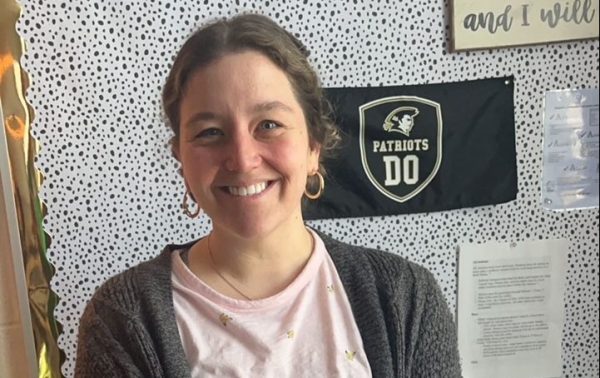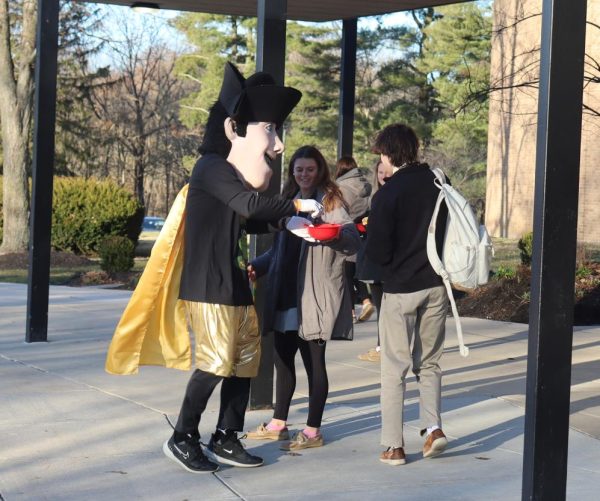Heroin overpowers Harford County
Leaning over an unresponsive body lying on the floor of a stranger’s house, volunteer EMT Maria Cosentino pumps the person’s chest, trying to bring the person back to consciousness. Eventually, the body is attached to a machine that is able to perform CPR more quickly – a common practice when dealing with heroin overdoses.
This overdose is one of many which occur in Harford County due to heroin abuse.
Cosentino, a current senior, has witnessed anywhere from 15 to 20 heroin overdoses since she began working as an EMT five months ago. She received four heroin overdose calls on one 10-hour shift, one call which ended with a fatality.
According to State’s Attorney Joe Cassilly, class of ‘68, 27 people died due to heroin overdoses in Harford County in 2015.
Narcan, known by its generic name as Naloxone, is an emergency opiate antidote used to counteract heroin overdoses by blocking the heroin receptors in the brain of a user. “If it weren’t for Narcan, there would be many more deaths,” Cassilly said.
Cosentino has used Narcan on patients first-hand and feels that it can make her job as a volunteer EMT much more scary. “One thing I don’t think people understand is that [Narcan] takes away their high, and they can get very angry as a result. Some people come and start hitting you, and we have police officers to back us up,” Cosentino said.
The number of heroin-related deaths in Maryland has steadily increased from 238 in 2010 to 578 in 2014, according to the Maryland Department of Health and Mental Hygiene.
Doe Lad, Founder of Addiction Connection Resources, was affected by heroin through her son’s addiction, and one thing she stresses is that heroin “addiction has no normal face, [and it] does not discriminate.” At ACR, Lad works with families and addicts to help find the best treatment programs available.
It’s a drug that you think is a small deal, but [it] can end up killing you — Senior Maria Consentino
Cosentino, who has been called for an overdose for both a 17-year-old and a 75-year-old, agrees with Lad. “It affects all ages,” Cosentino said.
In Harford County, the number of heroin overdoses have risen. In 2015, according to data from the Harford County Sheriff’s Office, law enforcement responded to at least one heroin overdose at least every other day.
Outside the Harford County Sheriff’s office in Bel Air on Main Street, there is a sign displaying the number of heroin overdoses and deaths that have occurred so far in 2016. As of April 11, the number of overdoses is currently reported as 60, and the number of deaths is eight.
While the lethal effects of Heroin are law enforcement’s primary concern, heroin is also a motivation for crime according to Cassilly, who, as the State’s Attorney, oversees all criminal prosecution in the county. “In my time as State’s Attorney, this has been the third [heroin epidemic], and all the epidemics correspond to an upswing in burglary and petty crime,” Cassilly said.
According to Cassilly, heroin dealers will probably only be given 18 months in jail if caught and end up serving only nine of them. In Harford County, heroin possession itself is considered a misdemeanor, and first offenders are often only prescribed treatment, usually in a methadone clinic. Methadone is a substance that replaces the need for heroin, but it is expensive and users often return to heroin because they can’t afford it.
So, where is all the heroin coming from and where are the hotspots?
The I-95 corridor is a huge lane of transportation for the drug. According to a report by ABC2News, on March 8, Maryland Transportation Police stopped three men from South Carolina on I-95 in Baltimore who had over 600 grams of heroin in their possession.
After the arrest, MDTA Police Chief Colonel Jerry Jones told ABC2News that “this [was] a significant arrest in Maryland’s fight against the destructive heroin and opioid epidemic,” and that the MDTA police focus on keeping heroin out of communities by shutting down dealers using the I-95 transport route.
Cassilly agrees that eliminating the supply of heroin and shutting down the dealers is important in battling the epidemic, but according to Lad, all of society must be involved. “We have to be open to talk about it, and the shame has to be removed,” she said.
Heroin is prevalent in Maryland, but the struggle to combat this epidemic is two-sided: focus needs to surround both the elimination of the drug and the treatment of the addicts.
“It’s just a battle. It’s a battle for your life, just like cancer,” Lad said.
Claire Grunewald is the Print Chief for The Patriot and jcpatriot.com.






